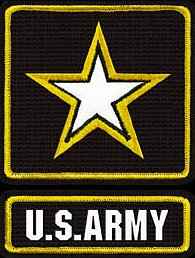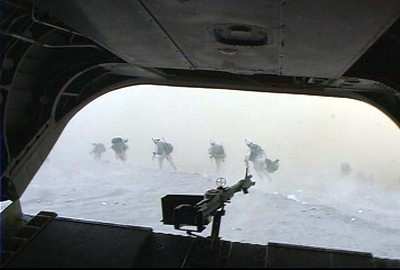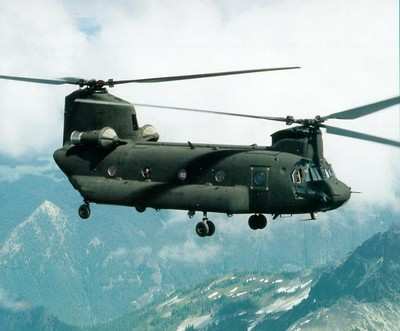 Aviators from Task Force Diamondhead
are helping to ensure the success of coalition forces in Kandahar
by providing air support for various missions throughout the
southern region of Afghanistan.
Aviators from Task Force Diamondhead
are helping to ensure the success of coalition forces in Kandahar
by providing air support for various missions throughout the
southern region of Afghanistan.
This support often comes in the form of air-assault missions,
during which aviation assets are used to rapidly insert ground
troops and equipment into remote locations.
The air support can also be in the form of resupplying units.
Regardless of the specific task, each mission is a carefully
orchestrated operation between Task Force Diamondhead and the
requesting unit. Air support has proven itself to be not only
faster, but also more effective, than ground convoys for deployed
troops serving across Afghanistan, officials said.
"Here in Afghanistan, the majority of the movement that we do is
by aircraft," said Army Maj. Robert Ault, Task Force Diamondhead
operations officer.
"The distances here are pretty great, and Afghanistan doesn't
always have the highway infrastructure system or roads to be able
to move around," he said. "If you want to move large concentrations
of soldiers, troops or supplies, or evacuate personnel, we rely on
aircraft to do that -- and that's where Task Force Diamondhead
comes in."
A major benefit of using air assets to move troops and supplies
is the added safety. The aircraft lands just long enough to drop
off personnel and equipment before leaving the area.
"We can move them in quickly and move them out a lot quicker
then you can on a ground convoy," said Staff Sgt. Deddra French,
Task Force Diamondhead operations noncommissioned officer. "It's a
lot easier to move a larger amount with the aircraft than with the
convoy, and we can use the element of surprise with the air
assault."
Soldiers said they are also pleased with the benefits of air
assaults. "With the air assault, we can position troops better and
there's less (of a risk)," said Army Spc. Tambouzi Green, a team
leader with Company A, 2nd Battalion, 35th Infantry Regiment. "It
positions me with my team and helps me to maneuver better with them
on the battlefield. Once we land, we have a better idea of what
needs to be done and where we need to go."

Air-assault missions not only insert ground troops directly into
a desired location, but supplies and equipment as well. "As
infantry, we're already carrying a lot of gear," said Army Staff
Sgt. Kenrick Rampersad, a squad leader with Company A. "This makes
it a little easier for us to move our soldiers and all of our
equipment from one point to another. We can fit a whole platoon in
one Chinook (helicopter)."
After the initial air-assault mission is complete, the aircraft
often make a second trip to the area to drop off supplies, like
food, water and fuel, that ground troops will need to successfully
accomplish their mission.

"It aids the commander and his decision making process, and
allows him to move personnel and equipment around the battlefield
more effectively," said Army Staff Sgt. Bruce Bryant, support
platoon sergeant from Headquarters and Headquarters Company, 2nd
Battalion, 35th Infantry Regiment. "This helps us accomplish our
mission and meet the commander's intent." [ANN Thanks Army Spc.
Dijon Rolle, 17th Public Affairs Detachment.]
 NTSB Final Report: Cessna 177B
NTSB Final Report: Cessna 177B ANN's Daily Aero-Term (05.08.25): Final Approach Fix
ANN's Daily Aero-Term (05.08.25): Final Approach Fix Aero-News: Quote of the Day (05.08.25)
Aero-News: Quote of the Day (05.08.25) ANN's Daily Aero-Term (05.09.25): Estimated (EST)
ANN's Daily Aero-Term (05.09.25): Estimated (EST) ANN's Daily Aero-Linx (05.09.25)
ANN's Daily Aero-Linx (05.09.25)





